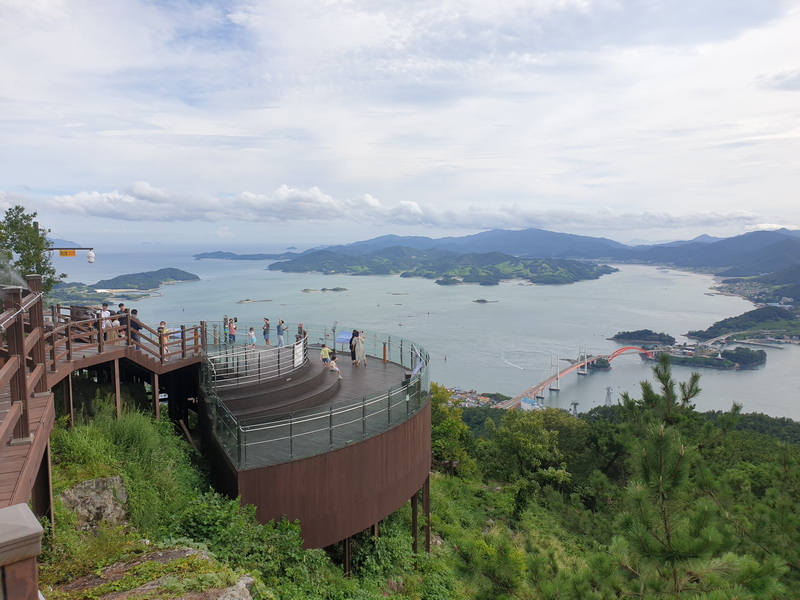Namhae and the Sacheon Cable Car
By William Urbanski
While the big cities in Korea get all sorts of attention with their newfangled technology and shiny buildings, some of the most overlooked areas in the country are the southern coastal regions. There is a plethora of destinations along the coast, all within a two-hour drive from Gwangju, that offer unparalleled natural beauty, wide-open spaces, fantastic beaches, and plenty of good times. Shinan, Jindo, and Goheung (but not Yeosu, an area that has become much too congested for my liking) all have many hidden treasures, but if I had to pick one that offers the most bang for your buck (or “wow for your won”), it would have to be Namhae.

Namhae is perhaps best known, especially among the foreigner/expat/waygookin community as home of the German village, which in former times used to host the alcohol- (and regret-) fueled Oktoberfest every year. But it turns out, there are plenty of other wonderful (and less regret-filled) adventures to be had on the butterfly-shaped peninsula. The other weekend, I had the pleasure of spending a night in Sacheon, which solidified Namhae’s status as my favorite coastal destination in the country.
Sacheon is located in the northeastern part of Namhae and features as its main attraction a cable car that spans the water from the mainland to the island of Choyang-do. Now I’ve been on a surprisingly high number of cable cars in Korea, and while I don’t mind them, they’re not exactly my cup of tea if you know what I mean. So, I didn’t have particularly high expectations for this one, but let me tell you, this one, as they say back in Ontario, was worth the drive to Acton.

After buying tickets for a very reasonable 15,000 won a piece, my wife and I made it through the line quite quickly and stepped inside the gondola that would carry us across the bay. Moments later, we were all very surprised by the view as our cable car whisked us over the water. After disembarking, we were happy to discover the island had a couple of cool features. There was an aquarium, a small zoo, and a really cool pirate ship thingamabob with a plexiglass floor thingamajig that you could stand on and take copious selfies from.
Maybe it’s just because I’m a bit of a nerd, but there was an old-style fishing weir a stone’s throw from the pirate ship, which I thought was quite interesting. To the untrained eye, a fishing weir looks like nothing more than a row of wooden poles sticking out of the water, but an explanatory plaque on the ship revealed its true purpose. As a historical side note, similar fishing weirs have been found all over the world, and even in my hometown in Ontario, there is one that has been dated to near 5,000 BC. In any case, it’s cool to see this primitive technology still in use.
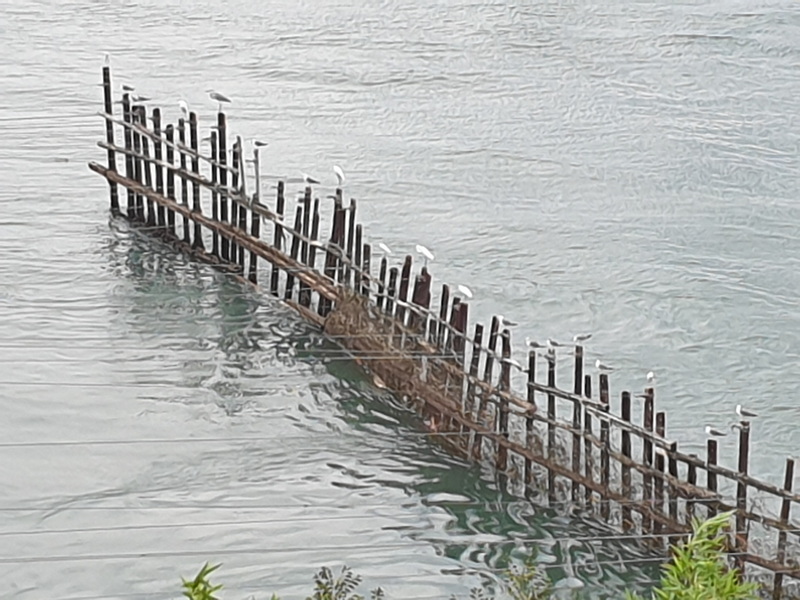
After hanging around on the island for a while, we got back in the cable car for what I thought would be the end of our trip, but instead of having to get off at the main station, the cable car continued up the side of the mountain for what would turn out to be the highlight of my day for a couple of reasons.
The first thing that was hard to miss was that the cable car course had actually been constructed over a Buddhist monastery or temple or something like that. Needless to say, the people at the temple building were less than pleased that the cable car got built and put a huge banner on their roof cursing all the people who rode the cable car. While the direct translation of the banner is something along the lines of “All those who ride on the cable car will have an unfortunate life,” my wife explained to me that their exact choice of words was particularly nasty. In all honestly, I would have to say that whoever put up the banner won this round of “Temple vs Cable Car” because what better way to stick it to the man than install a massive banner cursing the existence of everyone who sees it.
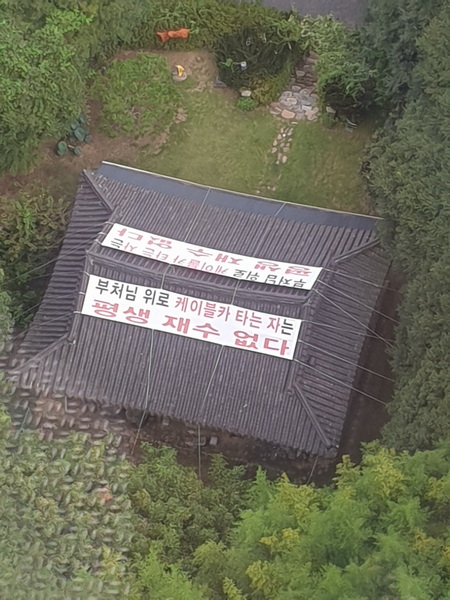
At the top of the mountain, there was a completely stunning lookout area that had me absolutely abusing the panorama picture function on my phone. On another historical note, there was a replica of a signal fire station at the top of the mountain, and just standing up there, it was easy to visualize what it must have been like to look over the water hundreds of years ago and keep an eye out for enemy ships.
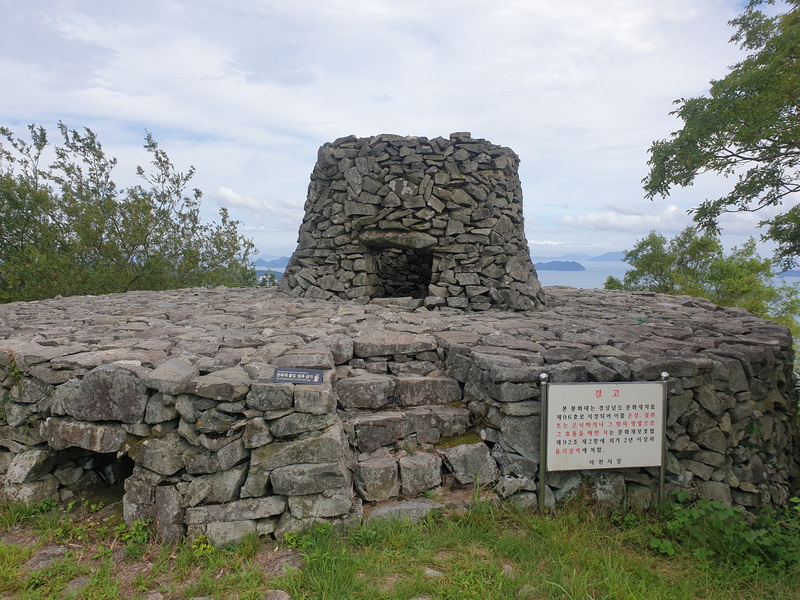
After finally arriving at the base station again, I generally felt impressed by the experience, which took about two hours from start to finish. As an added bonus, the area near the main cable car station has a wonderful boardwalk that lights up and is a great place to soak up the night atmosphere.
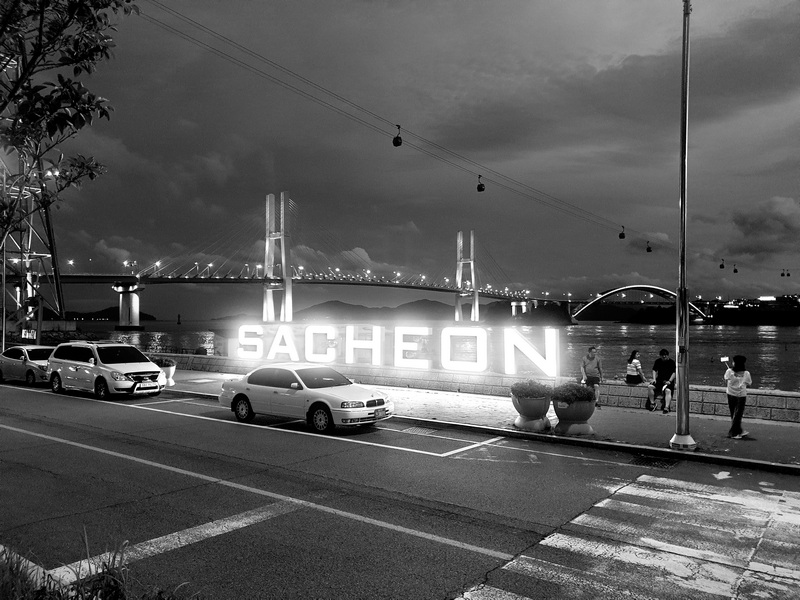
All in all, I would say that the cable car was surprisingly good and well worth the stop if you’re looking for a way to get away from the glitz and glamor of big city living for a night. Despite what a bunch of furious temple advocates have to say, the Sacheon cable car is the bee’s knees and the cat’s meow all rolled into one. Five stars out of five.
Sacheon Cable Car Information
- Address: 18-gu Sacheon-daero, (Daebang-dong) Sacheon, Gyeongsangnam-do / 경남 사천시 사천대로 18구 (대방동 492-2)
- Phone: (055) 831-7300
- Open: 10:00–21:00. Last ride: ~20:00
The Author
William Urbanski is the managing editor of the Gwangju News. He is married and can eat spicy food. Instagram: @ will_il_gatto



